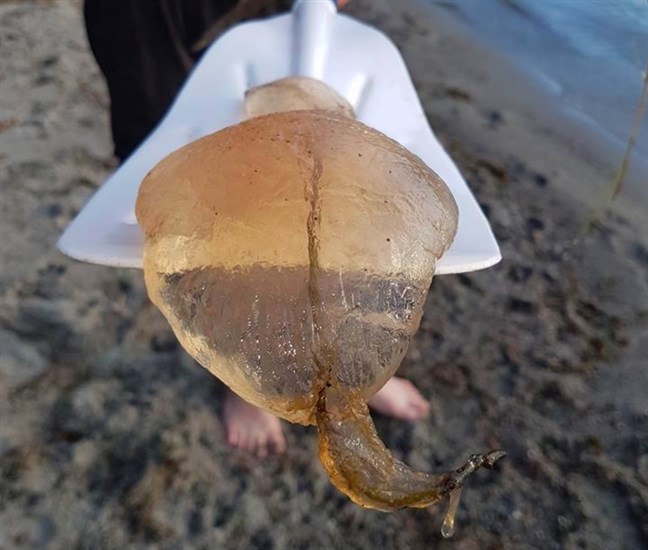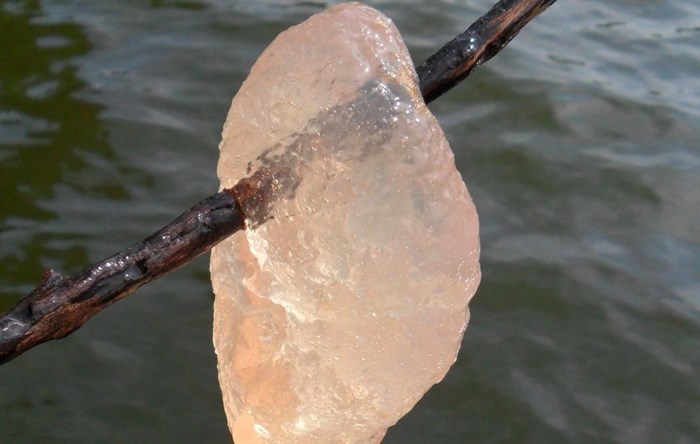
Deb Marshall found this blob at the north end of Okanagan Lake Aug. 21, 2017.
Image Credit: Submitted/ Deb Marshall
September 18, 2021 - 6:30 AM
A vacationer at Mara Lake in Mara, B.C. has found two creatures in the lake this month and they are something she has never seen before.
Tracy Evans from Calgary said she has spent summers at Mara Lake for most of her life and owns property there. She is currently there with her family exploring the lake and surrounding areas. She said she has pulled two jelly-like blobs from the lake in the last two weeks, both from the same location.
“These are very weird looking,” Evans said. “They look like gelatinous cucumbers with a vein or branch running through them. They have weight to them and are really compact and jiggly.”
Evans said she is worried the blobs might be an invasive species and could potentially hurt the lake, so she is researching them. She said she hopes to find another one so she can take a photo of it.
“The first one we found we threw back into the lake,” she said. “The second one came floating under the dock and I scooped it up. My daughter and I decided to save it to show my husband. He let her cut it up and examine it before I could take a picture.”
Evans said she doesn’t think the blobs are alive and reports they were both found rolling along the waves, coming into the shoreline.
She said they looked exactly the same as the one found at the north end of Okanagan Lake at the end of August, 2017, as seen in the photo.
READ MORE: North Okanagan woman cracks case of weird blob washed up on beach
Brian Leander is a professor in the Biology department at University of British Columbia who examined the photo.
"My first thought is that it’s a freshwater bryozoan colony (Ectoprocta)," he said in an email to iNFOnews. "These animals form large gelatinous masses on sticks and things and leave jelly behind. The colonies are likely larger and more abundant in lakes during seasons with denser microalgal blooms, which the bryozoan zooids feed on."
Leander said he doesn't think the bryozoan colonies are harmful to lakes.

Freshwater bryozoan jelly.
Image Credit: SUBMITTED/ Professor Brian Leander
Evans said she was at the lake in June this year and experienced a hotter than usual month which she thinks may have been a contributing factor. She said she and her daughter plan to keep walking around the lake looking for the gelatinous masses and learning more about them.
Bryozoans are tiny colonial aquatic creatures that effectively filter particles from the water and are native to North America, often growing on docks and other submerged wood.
To contact a reporter for this story, email Shannon Ainslie or call 250-819-6089 or email the editor. You can also submit photos, videos or news tips to the newsroom and be entered to win a monthly prize draw.
We welcome your comments and opinions on our stories but play nice. We won't censor or delete comments unless they contain off-topic statements or links, unnecessary vulgarity, false facts, spam or obviously fake profiles. If you have any concerns about what you see in comments, email the editor in the link above.
News from © iNFOnews, 2021